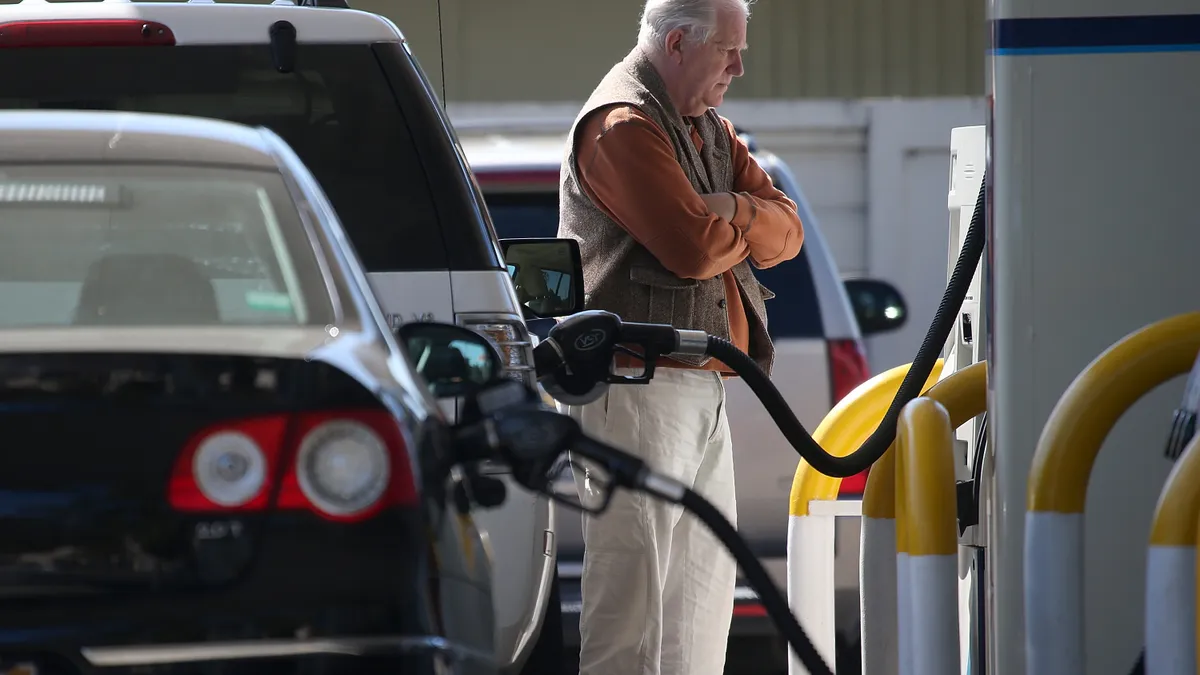Only about half of major U.S. gas station merchants expected to meet a deadline this month for installing payment systems that accept credit and debit chip cards, and those who didn't will now shoulder the expense of any counterfeit fraud at those pumps.
After surveying merchants that represent about 45,000 gas stations nationwide, payments software company ACI Worldwide reported this month about 48% expected to have chip card readers across all of their pumps by April 17, a deadline for installing the new technology standard developed by the big card companies Europay, Mastercard and Visa (EMV).
The chip card technology shift initiated in 2012 is an improvement on the magnetic strip because it is less susceptible to counterfeit fraud. While there is no legal requirement that the merchants shift to the new EMV standard, they'll be stuck with any fraud losses that occur on the non-upgraded systems. By contrast, the card issuers would shoulder that expense if the systems met the new standard.
While other types of merchants met the new standard in 2015, fuel merchants were initially given until Oct. 1, 2017 because of extraordinary upgrades that some gas stations might require, including potentially installing new pumps. That date was eventually postponed to Oct. 2020 for fuel merchants, and then extended again last year to this April because of the COVID-19 pandemic. Some are still grappling with the upgrades.
"Many of the challenges fuel retailers faced last year during the coronavirus pandemic that affected their ability to meet the 2020 EMV deadline are still in play," said Chris Blasinsky, a spokesman for National Association of Convenience Stores. "For example, technician availability, parts availability, overseas manufacturing of necessary equipment and certified solution availability" were among the obstacles, he said.
Nonetheless, some fuel merchants might decide against an upgrade to the new chip card readers because they may consider the fraud threat to be relatively low. Only about 1.3% of U.S. card payment fraud happens at pumps, Visa has said.
ACI underscored the potential repercussions for those who don't use the new chip readers. "Although previously protected from fraud losses, merchants will now bear the brunt of fraud overnight," ACI Worldwide Executive Vice President Debbie Guerra said in a press release on the survey results. "While EMV compliance is a major undertaking, and one that requires a significant capital investment, there is no doubt that the pandemic also played a big role in some fuel merchants' inability to meet the April deadline."
The ACI survey, which was taken before the deadline passed and was based on merchant expectations, also revealed that of the fuel merchants who haven't met the deadline, only half expect to meet it by the end of this year. Proprietors have faced real difficulties in implementing the new systems, "with overall diminished resources due to the pandemic and slow testing and certification, which is typically done in person," Guerra noted in the release.
Despite the poor showing this month with respect to merchants who had fully implemented the new card systems across all their gas stations, most of the non-compliant owners have implemented the new technology for at least half their stations. The ACI survey reported that 26% of those surveyed have implemented the upgrades at more than three-quarters of their stations; 22% have done so at half their stations; and 4% have upgraded between half and three-quarters of their locations.
"The fuel industry made significant progress upgrading to a more secure and consistent EMV purchase experience ahead of this deadline," said Mastercard Spokesman Seth Eisen, noting a reduction in incidents of fraud. "That said, if a merchant has not upgraded their fuel dispensers to accept EMV chip transactions and fraud occurs, they would be responsible for those costs."
A spokesman for Visa declined to provide a comment on the record.
Of the 45,000 respondents to the ACI survey, about 74% of the merchants own more than 500 stations, with the remainder owning between 200 and 500 stations. About 35% are convenience store owners; 30% are major oil companies; 26% are grocery store owners; and 9% are travel centers.











